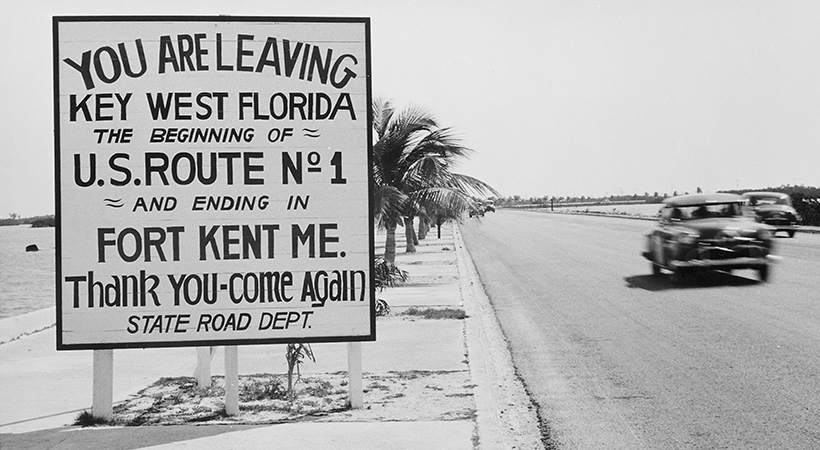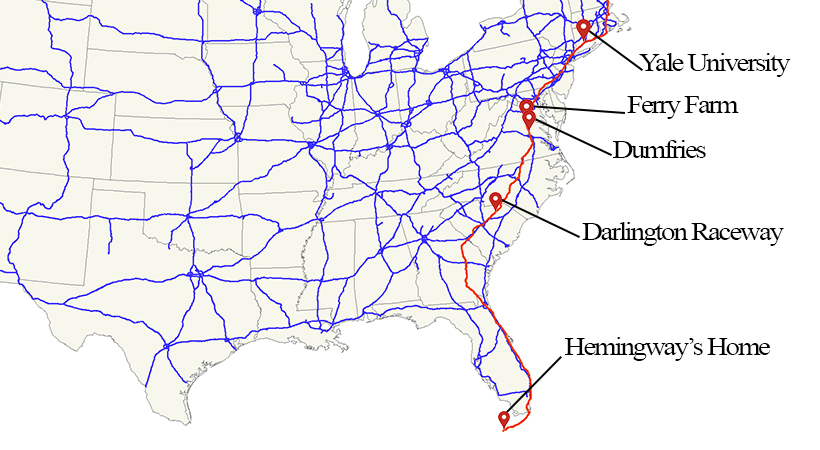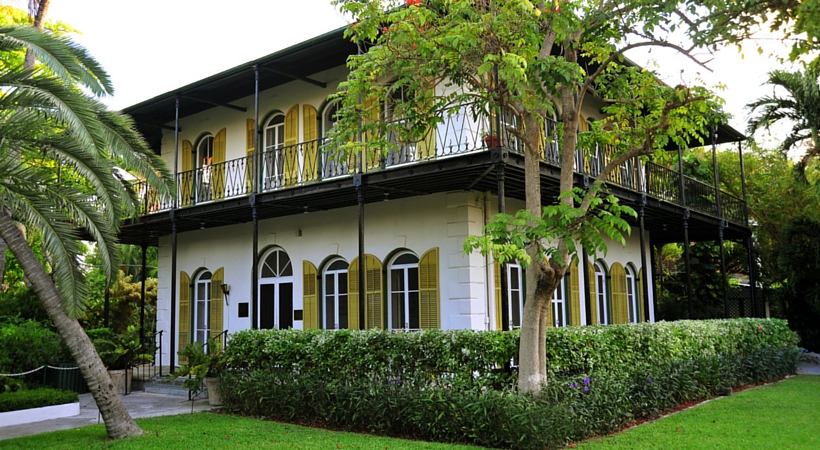U.S. Route 1 spans nearly 2,400 miles from the northern border of Maine to the southern tip of Florida. The highway goes through almost all of the major cities running along the East Coast of the United States. Although there are other routes along the same corridors, U.S. Route 1 remains a favorite for its scenic landscapes, famous landmarks and relatively low traffic.

The highway is often used by many auto travelers for road trips and local commutes. With so many things to see and do along the route, many people find a bevy of hidden local treasures among the twists and turns of this historic highway. To fully appreciate the journey, it’s important to go back and see what makes U.S. Route 1 such an important part of automotive Americana.
Original Landscape
In the 1600s the basic path of Route 1 started as a tree-lined trail. While moving up and down the trail, it was necessary to take the rickety bridges and canoe ferries across the rivers. The route was frequently used by traders delivering goods along the East Coast. In the early 1900s, city organizers started creating auto trails to connect some of the major cities. The first auto trail developed connected Washington, D.C. to Atlanta.

Development of the Capital Highway, Atlantic Highway and Jefferson Highway helped establish major sections of Route 1. Smaller states, such as Maryland, established their own major thoroughfares that also became a part of this extensive highway system. Route 1 in Virginia was originally the Jefferson Highway before it became State Route 31 in 1923. Just three years later, the routes were integrated into a single stretch named U.S. Route 1.
Pre-U.S. Highway System
Unlike many other highways across the country, much of Route 1 was paved. In fact, Maryland paved its meager portion in 1914, which was well before the establishment of the U.S. highway system. Infrastructure designers focused on eliminating redundant routes to create a cohesive highway that ran in a single line down the East Coast.
From the 1930s on, road designers started creating bridges that allowed vehicles to safely cross large stretches of water without waiting for ferries. Some of the bridges connected one state to another, like the Memorial Bridge between Maine and New Hampshire. Others were strictly intrastate.

Famous Landmarks
Route 1 passes many famous landmarks, one of which is the Occoquan Bay National Wildlife Refuge, a hidden oasis of beautiful natural preserves located in Woodbridge, Virginia. The refuge is not only for the various songbirds, butterflies and fish, but it’s also a quiet getaway from busy urban life. Occoquan Bay National Wildlife Refuge is open year-round, including federal holidays, from 7 a.m. – 5 p.m. October 1 – March 31 and 7 a.m. – 7 p.m. from April 1 – September 30.
A little further down the road lies George Washington’s home place at Ferry Farm, located along Route 1 in Virginia. With a quick stop, visitors can stand in the location where the mythic cherry tree was chopped down and the silver dollar was tossed across the river. Further down the road, you’ll encounter Dumfries, the oldest town in Virginia. Many Civil War sites also pepper the landscape across the state of Virginia.
The Florida Keys section of Route 1 is notable for its connection to Ernest Hemingway, who wrote many of his best works at his home located at the southern end of Route 1. At the other end of the highway, visitors can stop by New Haven, Connecticut at the hometown of Yale University to view more than 70 gardens. The Darlington Raceway in South Carolina attracts vehicle enthusiasts who enjoy the unique experience of taking the historic highway to the original home of NASCAR’s superspeedway.

Hemingway’s House, Photo courtesy of Rob O’Neal Photography
Becoming a Scenic Route
As populations across the East Coast grew, city designers began focusing on construction of Interstate 95. The highway follows the general path of Route 1, but was intended to be a quicker path from destination to destination. Travelers may also transfer onto Interstates 85 and 20 while going through North Carolina, South Carolina and Georgia. These highways were fully constructed by 1980, leaving U.S. Route 1 as a dedicated scenic route.
U.S. Route 1 provides road trippers and Sunday drivers an unending array of scenic vistas along the East Coast. From Florida’s Coral Reef State Park to the starting line of the Can-Am Crown International Sled Dog Race in Maine, U.S. Route 1 is your paved access to wonderful and historic sites.
Want to plan a road trip down U.S. Route 1 in a Honda? Contact Hendrick Honda Woodbridge today for a test drive.
